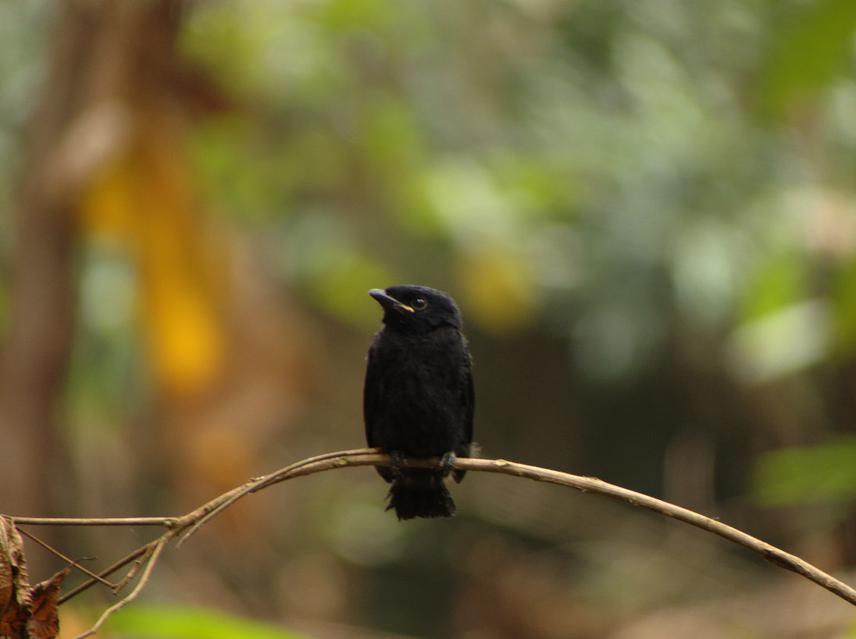Robin Cameron Whytock
This project aims to evaluate the socio-economic value of birds for local communities, assess the status of threatened species, and initiate a stakeholder-led conservation project.

Juvenile Drongo.
A diversity of forest and Savannah birds are targeted for the bushmeat and traditional medicine trade. However, the status of many forest species is poorly known, unlike their Savannah counterparts. For example, it has been established that vulture population declines in West and Central African Savannah are linked to the commercial trade in vulture body-parts used in traditional medicine. The palmnut vulture Gypohierax angolensis, which inhabits the forest zone of Central & West Africa, is also targeted for traditional medicine and bushmeat but little is known of the species' ecology or population status. Likewise, other vulnerable forest species such as crowned eagles Stephanoaetus coronatus are potentially threatened by bushmeat hunting, but there is a lack of empirical data. It is therefore essential that baseline ecological and socio-economic assessments are undertaken to inform conservation initiatives.
The project aims to:
(1) identify the mechanisms driving the trade and consumption of birds in the forest zone of Cameroon,
(2) assess the sustainability of hunting pressure facing vulnerable species such as crowned eagles,
(3) initiate a community-led conservation programme.
The project will be conducted in the proposed Ebo National Park (1,136 km2) during 2015.The avifauna here is highly representative of Cameroon’s lowland and sub-montane forests, and the communities living in the area are highly diverse, with many villages comprised of immigrants to the area. For example, Mamba village was formed in the 1980s by hunters from Cameroon's eastern border with the Central African Republic, and more recently hunting opportunities and the logging industry have attracted people from the West and North West regions bordering Nigeria. Thus local communities who rely on the Ebo forest for food and income have a diverse range of social and cultural beliefs, and results are likely to be representative of the wider region.
Socio-economic surveys using structured questionnaires and semi-structured interviews will be conducted in a large sample of over 40 villages near the Ebo forest to establish the economic and cultural value of birds for local people, and to assess the level of hunting pressure facing vulnerable species. We will also evaluate the population status of vulnerable species to determine the sustainability of hunting pressure. This information will be used to develop a conservation action plan, which will be informed through consultation with local communities.